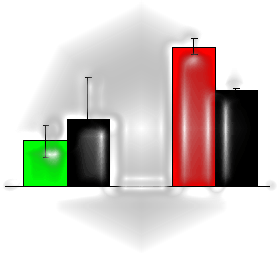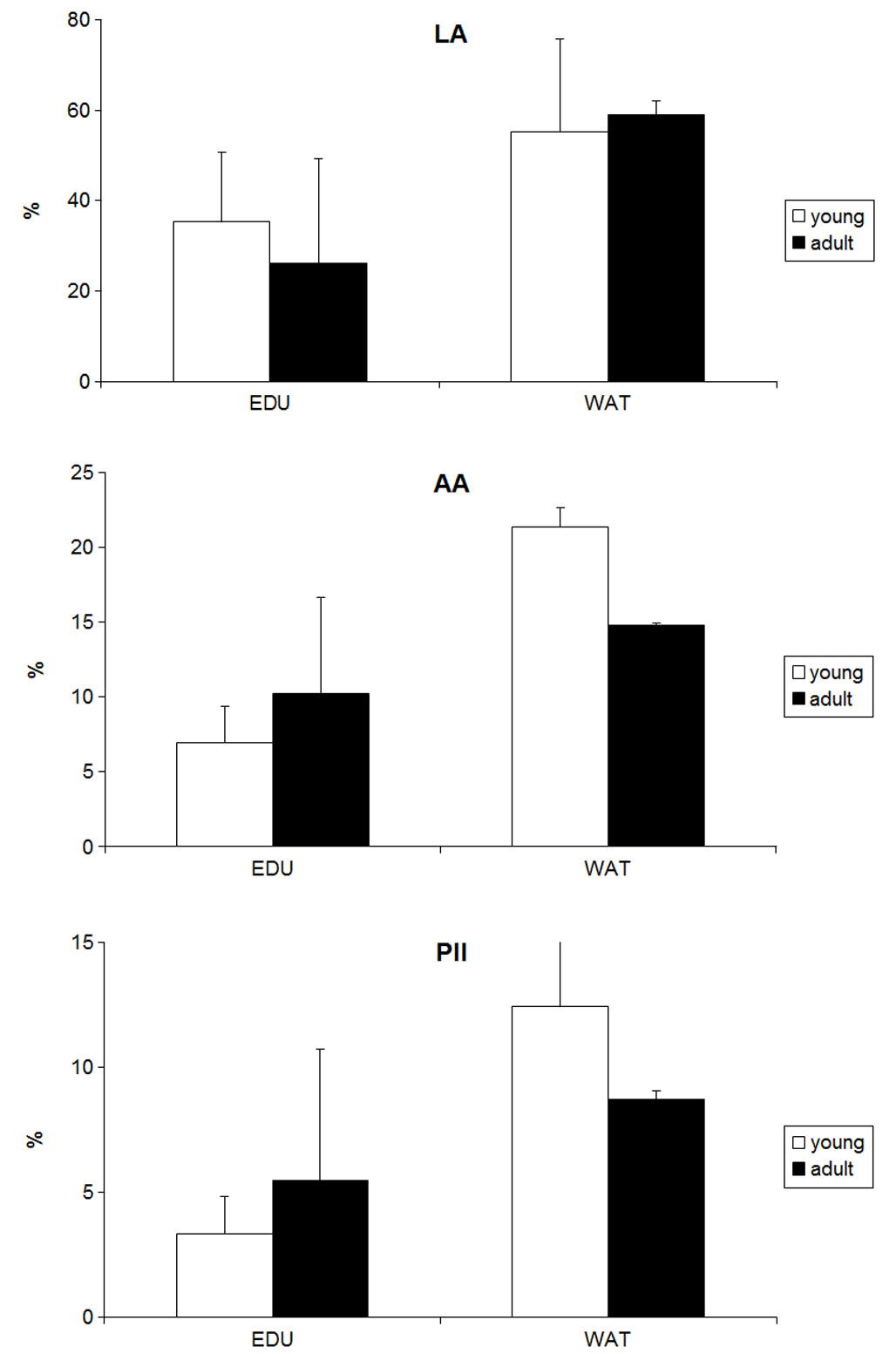
Soil drench of ethylenediurea (EDU) protects sensitive trees from ozone injury
iForest - Biogeosciences and Forestry, Volume 4, Issue 2, Pages 66-68 (2011)
doi: https://doi.org/10.3832/ifor0569-004
Published: Apr 05, 2011 - Copyright © 2011 SISEF
Research Articles
Collection/Special Issue: IUFRO RG 7.01 2010 - Antalya (Turkey)
Adaptation of Forest Ecosystems to Air Pollution and Climate Change
Guest Editors: Elena Paoletti, Yusuf Serengil
Abstract
Ozone (O3) is the air pollutant of major concern for vegetation. Levels in Mediterranean cities may exceed the criteria for vegetation protection. Ozone may induce a number of plant responses, e.g., visible injury on the leaves, that affect the ornamental value of urban forests. Antioxidant application may protect sensitive plants from ozone. The most successful synthetic antioxidant is ethylenediurea (EDU). Here we set the optimal EDU dose and concentration (260 mg m-2 leaf, 450 ppm) for protecting adult Fraxinus excelsior trees from ozone visible injury by means of EDU applications as soil drench.
Keywords
Ethylenediurea, EDU, Tropospheric ozone, Urban forests, Ornamental trees
Introduction
Ozone (O3) is the air pollutant of major concern for vegetation, because of its elevated phytotoxicity and widespread distribution ([6]). Ozone concentrations in the cities are usually lower than in suburban and rural areas, but levels in Mediterranean cities may exceed the criteria for vegetation protection ([7]). Ozone may induce a number of plant responses - including leaf visible injury, premature leaf senescence, growth reduction, altered water balance, predisposition to other urban stressors like water deficit or pathogen attack - that affect the ornamental value of urban forests. Visible injury usually occurs on leaves as interveinal dark stipples on the upper blade only.
Antioxidant application may protect sensitive plants from ozone injury ([12]). The most successful synthetic antioxidant is N-[2-(2-oxo-1-imidazolidinyl) ethyl]-N’-phenylurea (ethylenediurea, abbreviated EDU). EDU is effective in protecting crop and tree species when regularly applied. EDU is rapidly transported in the acropetal direction, probably via the xylem stream, and accumulates in the apoplastic space of the leaves, but for a limited time. EDU in leaves is not transported from them to leaves that have developed since EDU treatment, hence the need for application at 1-3 week intervals to provide continuous protection.
Small-size plants may be treated by foliar spray including a surfactant drop as wetting agent. Based on past observations of foliar ozone-like injury, one hibiscus hedge (Hibiscus syriacus cv. Minerva), with plants known to be ozone-sensitive, was selected on the hills around Turin (“Millerose” Park, Italy) and treated weekly by spraying 300 ppm EDU over one growing season. EDU significantly reduced ozone visible injury (-75%), thus confirming the injury was caused by ambient ozone ([11]). Seeds were collected and seedlings were exposed to ozone in filtered (no O3) vs. not-filtered (+30 ppb O3) open-top chambers. Visible injury was similar to that occurring under ambient conditions, thus confirming not only that ozone was the cause of injury, but also that the ozone sensitivity was heritable.
The application of EDU to adult ornamental trees is technically difficult. The most successful techniques for trees have been trunk injection, by means of a low-pressure pump, and trunk infusion, by gravitational pressure. Both trunk injection and infusion require making an entry hole in a tree trunk and provision of a reservoir of the chemical. The former method was applied to young Poplar cuttings ([2], [1], [3]). The latter method, where the chemical is taken up by transpiration of the tree, was applied to adult Ash trees in the “Millerose” Park of Turin, Italy ([8], [9], [10]). The size of these Ash trees was the largest in all EDU experiments on tree species, i.e., 13-17 cm diameter at breast height (16-31 years old). The concentration to provide protection from visible ozone injury was 450 ppm EDU, corresponding to 13-26 mg m-2 leaf, every three weeks. Protection was recoded at all three levels in the crown.
Although EDU was successful in both protecting from ozone visible injury and highlighting some mechanisms of ozone injury, gravitational infusion required at least 12 holes in the trunk, i.e. two holes on the opposite sides of the trunk every 21 days from May to September. Additional holes must be drilled in case of ineffective uptake. Therefore, this technique cannot be recommended for long-term treatments of trees. A preliminary investigation with 6 L of EDU solution (450 ppm) applied as drench in 12 soil holes (5-cm diameter, 10-cm depth) that were evenly distributed around every tree (50-60 cm distance from the tree base) was carried out on the same symptomatic Ash trees and induced a non significant decrease in visible injury during the growing season 2007 ([12]). This paper show the result of a new soil drench experiment, with the main aim of standardizing an effective EDU dose for the protection of adult trees from ozone visible injury.
Materials and methods
The experimental site was located at the “Millerose” park in Turin (Italy, 45° 04’ 25” N, 07° 43’ 46” E). Based on past observations ([8], [9], [10], [12]), eight young and six adult ash (Fraxinus excelsior L.) trees showing visible ozone injury in previous years were selected and treated with 450 ppm EDU as soil drench every three weeks. Ooze tubes (engineered watering solutions, Atlanta, Georgia, USA) equipped with drip tubing were put around the base of our trees. Half of the trees were treated with water and half with EDU (100% active ingredient). They were exposed to ambient ozone levels for the growing season 2008. The EDU dose was 260 mg m-2 leaf, i.e., 3.6 times higher than that applied in 2007 ([12]), when a non significant reduction of symptoms was observed. The total leaf area per tree was estimated on a DBH (Diameter at Breast Height) basis by using the data in Le Goff et al. ([5]). Visible injury was assessed in September on two 1-year-old sun shoot per tree, gathered from the lower third of a crown, by counting the number of leaflets showing interveinal stipples and expressed as the percentage of injured leaflets of all leaflets present (LA), and by visually assessing the percent surface injury (according to [4]) and expressed as the percentage of injured leaflet surface per symptomatic leaflet surface (AA). A Plant Injury Index (PII) was then calculated as follows ([11] - eqn. 1):
After checking for normal distribution, a two-way analysis of variance (tree age class × treatment) was applied on the data, after arcsin transformation of percents.
Results and discussion
Young and adult trees did not show significant differences in visible injury both when treated with EDU and with water (Tab. 1, Fig. 1). The application of EDU as soil drench induced a significant decrease in the extent of injured leaf surface area per symptomatic leaf (AA) and in the Plant Injury Index (PII), while the decrease of the percentage of injured leaflets per shoot was not significant. According to previous studies where EDU was applied to trees by stem injection ([2], [1], [3]) or trunk infusion ([9]), EDU protection was not complete, as visible injury was reduced by soil X = Y · Z drench but not avoided. On average, the amount of injured leaflets and the severity of injury in injured leaflets were reduced by 55% and 44%, respectively. This level of protection may considerably increase the ornamental value of a tree in an ozone-polluted environment.
Tab. 1 - Levels of significance (p) of a two-way analysis of variance on percent of injured leaflets per shoot (LA), percent of injured surface area per injured leaflet (AA) and a combination of LA and AA [PII = (LA·AA)/100]. (ns): p>0.1; (+): p<0.1; (*): p<0.05.
| Factor | LA | AA | PII |
|---|---|---|---|
| Tree age class (young vs. adult) | 0.810 ns | 0.753 ns | 0.871 ns |
| Treatment (EDU vs. water) | 0.138 ns | 0.021 * | 0.058 + |
| Interaction | 0.759 ns | 0.515 ns | 0.821 ns |
Fig. 1 - Percent (±SE) of injured leaflets per shoot (LA), injured surface area per injured leaflet (AA) and plant injury index (PII) in young and adult Ash trees, treated with ethylenediurea (EDU) or water (WAT) as soil drench for one growing season.
In conclusion, soil drench of 450 ppm EDU over the growing season can be successfully used to reduce the extent of ozone injury on the leaves of ornamental trees, provided an optimal dose is set through preliminary ecotoxicology tests.
References
Gscholar
CrossRef | Gscholar
Authors’ Info
Authors’ Affiliation
IPP-CNR, Via Madonna del Piano 10, I-50019 Sesto Fiorentino (FI - Italy)
Dept. Plant, Soil and Insect Sciences, University of Massachusetts, Amherst, MA (USA)
Corresponding author
Paper Info
Citation
Paoletti E, Manning WJ, Ferrara AM, Tagliaferro F (2011). Soil drench of ethylenediurea (EDU) protects sensitive trees from ozone injury. iForest 4: 66-68. - doi: 10.3832/ifor0569-004
Paper history
Received: Apr 06, 2010
Accepted: Dec 21, 2010
First online: Apr 05, 2011
Publication Date: Apr 05, 2011
Publication Time: 3.50 months
Copyright Information
© SISEF - The Italian Society of Silviculture and Forest Ecology 2011
Open Access
This article is distributed under the terms of the Creative Commons Attribution-Non Commercial 4.0 International (https://creativecommons.org/licenses/by-nc/4.0/), which permits unrestricted use, distribution, and reproduction in any medium, provided you give appropriate credit to the original author(s) and the source, provide a link to the Creative Commons license, and indicate if changes were made.
Web Metrics
Breakdown by View Type
Article Usage
Total Article Views: 55712
(from publication date up to now)
Breakdown by View Type
HTML Page Views: 47038
Abstract Page Views: 3305
PDF Downloads: 3876
Citation/Reference Downloads: 8
XML Downloads: 1485
Web Metrics
Days since publication: 5385
Overall contacts: 55712
Avg. contacts per week: 72.42
Article Citations
Article citations are based on data periodically collected from the Clarivate Web of Science web site
(last update: Mar 2025)
Total number of cites (since 2011): 15
Average cites per year: 1.00
Publication Metrics
by Dimensions ©
Articles citing this article
List of the papers citing this article based on CrossRef Cited-by.
Related Contents
iForest Similar Articles
Research Articles
A comparison between stomatal ozone uptake and AOT40 of deciduous trees in Japan
vol. 4, pp. 128-135 (online: 01 June 2011)
Research Articles
Effects of abiotic stress on gene transcription in European beech: ozone affects ethylene biosynthesis in saplings of Fagus sylvatica L.
vol. 2, pp. 114-118 (online: 10 June 2009)
Research Articles
Preliminary results of the tolerance to inorganic contaminants and phytoextraction potential of twelve ornamental shrub species tested on an experimental contaminated site
vol. 11, pp. 442-448 (online: 18 June 2018)
Research Articles
Bioaccumulation of long-term atmospheric heavy metal pollution within the Carpathian arch: monumental trees and their leaves memoir
vol. 17, pp. 370-377 (online: 27 November 2024)
Research Articles
Changes in the proteome of juvenile European beech following three years exposure to free-air elevated ozone
vol. 4, pp. 69-76 (online: 05 April 2011)
Review Papers
A review of the performance of woody and herbaceous ornamental plants for phytoremediation in urban areas
vol. 13, pp. 139-151 (online: 14 April 2020)
Research Articles
Prediction of ozone effects on net ecosystem production of Norway spruce forest
vol. 11, pp. 743-750 (online: 15 November 2018)
Short Communications
Ozone flux modelling for risk assessment: status and research needs
vol. 2, pp. 34-37 (online: 21 January 2009)
Research Articles
Ambient ozone phytotoxic potential over the Czech forests as assessed by AOT40
vol. 5, pp. 153-162 (online: 25 June 2012)
Research Articles
Ozone fumigation effects on the morphology and biomass of Norway spruce (Picea abies L.) saplings
vol. 2, pp. 15-18 (online: 21 January 2009)
iForest Database Search
Search By Author
Search By Keyword
Google Scholar Search
Citing Articles
Search By Author
Search By Keywords
PubMed Search
Search By Author
Search By Keyword










